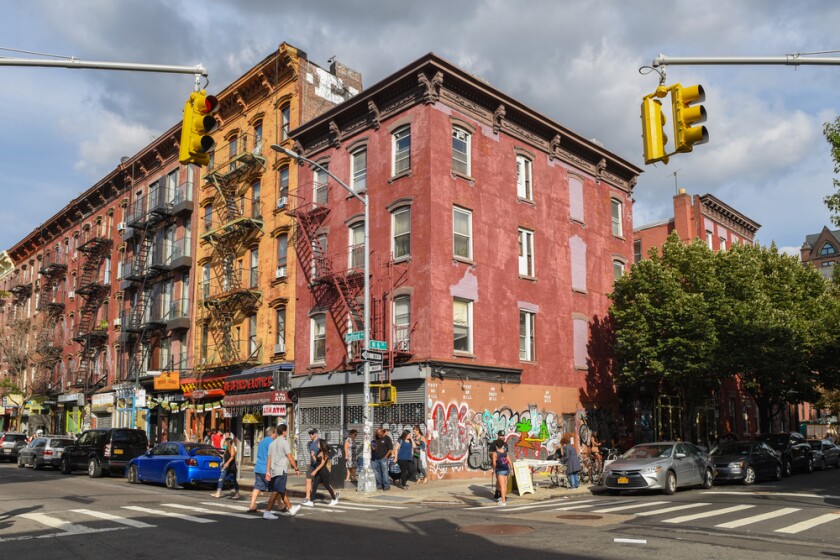
It is no secret that many faith-based and other anchor institutions like HBCUs are large landowners that pay no taxes on the land they own. Many of these institutions joke that they are land-rich and cash-poor. But these institutions, located as they typically are in central parts of cities that are often blighted and near downtown commercial centers, can play a vital role in revitalizing communities and providing affordable housing.
It goes without saying that government needs to be intentional and proactive in its outreach to nonprofits, especially faith-based and minority-serving institutions. Toward this end, Atlanta Mayor Andre Dickens has set up a housing innovation lab and appointed a senior adviser with oversight over affordable housing. Clarkston, a small town just outside Atlanta, overhauled its zoning policies a few years back to make it possible for the development of affordable microhousing. In this year’s budget, Madison, Wis., Mayor Satya Rhodes-Conway raised the funding for affordable housing from $7 million to $10 million and pledged the same amount for the next five years. And California Gov. Gavin Newsom has called for increasing state funding to preserve manufactured-housing parks as affordable housing.
All of those efforts rely at least in part on the work and resources of nonprofits, and these efforts work best when governments establish offices, either within or outside of their planning and housing departments, to specifically address the magnitude of problems that nonprofits face. Then local governments need to have employees on board with knowledge of and sensitivity to those challenges. Finally, cities need to provide funding directly to these organizations to help them pay some of the pre-development costs necessary to get started.
Thus far I’ve focused on what local governments could and must do. But of equal, if not greater, importance is what faith-based and other anchor institutions must do. They need to agree within their respective organizations on a vision for developing their properties. They need to decide why they are getting into the affordable-housing business in the first place. Is it an extension of their ministry to build a beloved community? Do they expect their entry into housing to yield enough income to underwrite a building or substantial renovation to an existing sanctuary? Do they want to sell their property or ground-lease it for 100 years? Are their properties debt-free? These and other questions need to be answered before moving forward.
When I served as a vice president of community development at Benedict College in Columbia, S.C., I discovered early on that the college could not legally do “development work” itself; it needed a community development corporation (CDC) to implement its vision. The same holds true for faith-based and other anchor institutions. Incorporating such an entity will make it easier to access funding such as that available from the U. S. Department of Housing and Urban Development to help HBCUs build capacity.
Cities should provide small grants, of perhaps up to $20,000, to help nonprofits plan, create CDCs, facilitate consensus from internal stakeholders on concept and vision, and retain the services of accountants and lawyers to review their financial records and ensure that they are on sound legal footing.
Community and housing development is hard to accomplish, and part of what makes it so hard is the zoning laws and policies in place to protect what is believed to be the vested interest of current homeowners. Protecting the integrity and historical character of neighborhoods is important, but this should not be done at the expense of low- and moderate-income residents. If cities are to remain affordable and places where more than the rich can live, public officials must help create the environment for affordability by loosening zoning restrictions and removing other barriers.
I have worked with many clients who have had to compromise their visions of a more robust, and comprehensive, development because of overly restrictive zoning regulations. In my own Atlanta neighborhood, Washington Park, shortly after I left the city council a developer wanted to build affordable townhouses over a transit right of way that ran in front of the park from which the neighborhood gets its name. First, city planners said it couldn’t be done for engineering reasons. Then the land lay dormant for a decade. Finally, when all engineering issues had been cleared up, the project was stalled because the neighborhood wanted only single-family housing.
The developers, who by the way were minority and specialized in inner-city projects, gave in to the demands of the neighborhood. They built market-rate homes that sold quickly. This led to gentrification that started 20 years ago and continues. Today the homes sell for over half a million dollars and neighbors who fought hardest against the denser development of townhomes are complaining about gentrification.
Cities have a short window to address the negative side effects of gentrification and provide more affordable housing. We all share an interest in seeing that our cities remain vibrant and diverse, and that this happens without displacement. Faith-based and anchor institutions like HBCUs can be of tremendous support if we help them build capacity. It is important for us all to remember this paraphrase from the Book of Joshua (24:13): We all live on land on which we have not labored, and in cities which we have not built. And we all are eating from vineyards and olive groves which we did not plant.
Governing's opinion columns reflect the views of their authors and not necessarily those of Governing's editors or management.
Related Content













